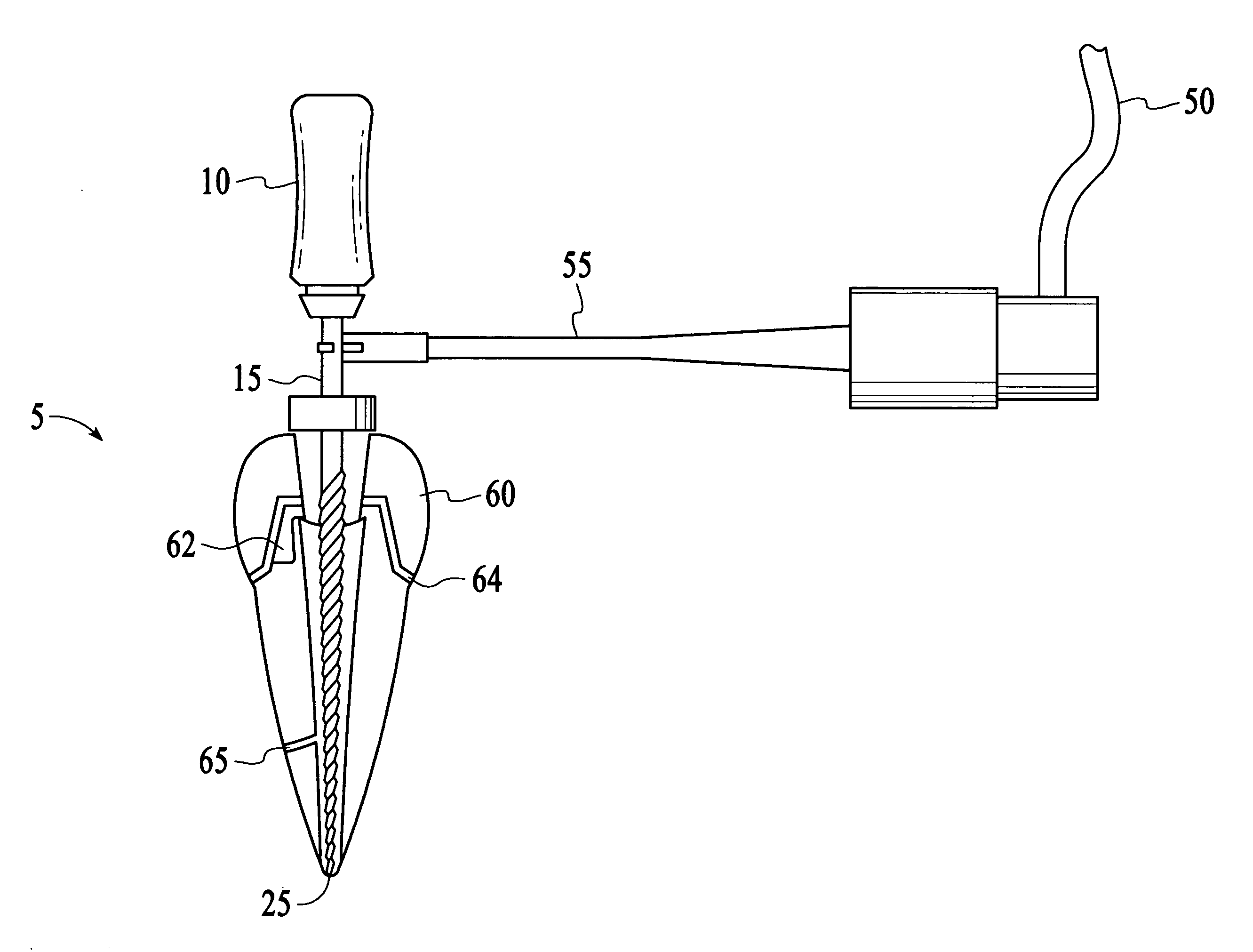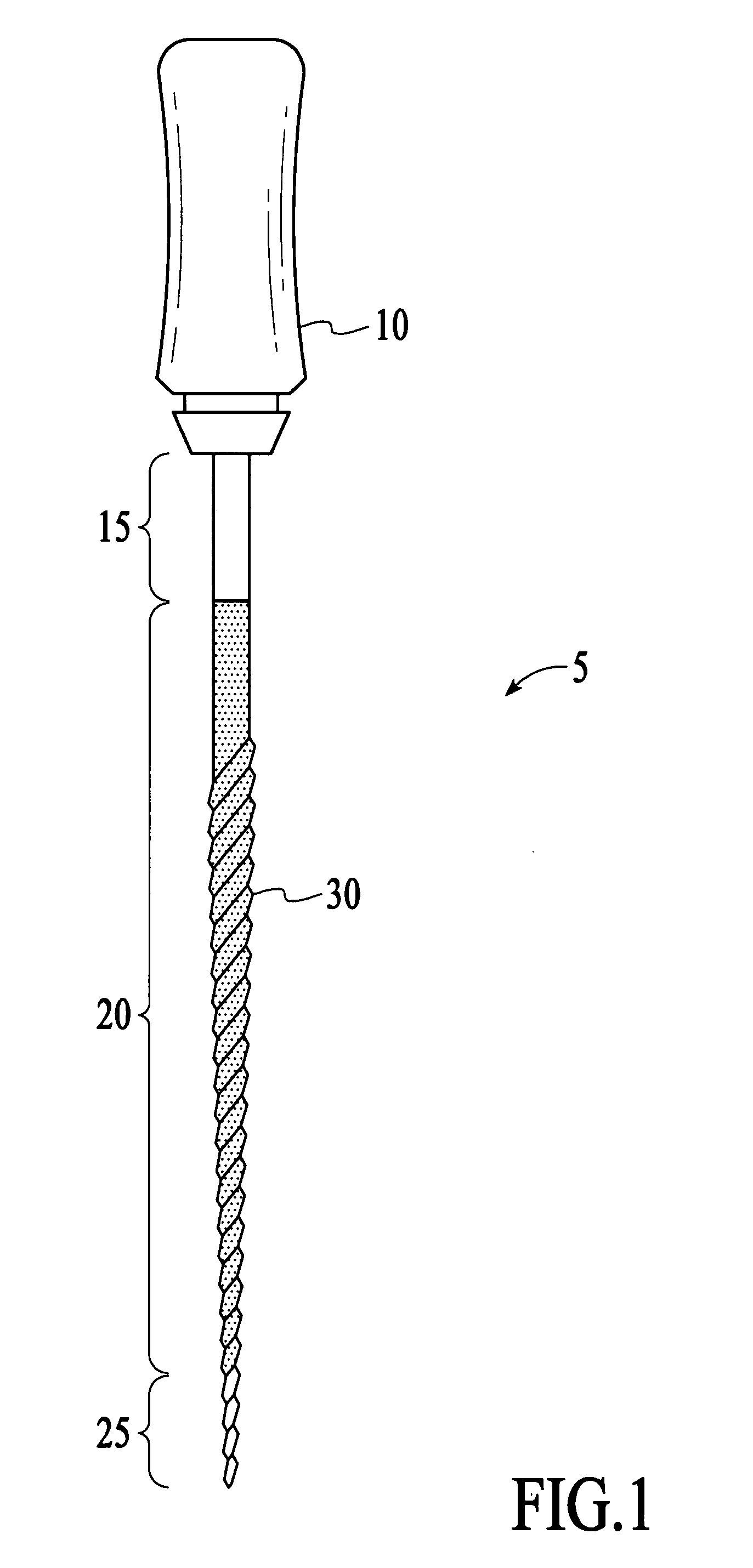Endodontic instrument with non-conductive coating and method for locating the apex of a tooth
- Summary
- Abstract
- Description
- Claims
- Application Information
AI Technical Summary
Benefits of technology
Problems solved by technology
Method used
Image
Examples
Embodiment Construction
[0015]Referring now descriptively to the drawings, the attached figures illustrate example embodiments of the present invention. FIG. 1 depicts an example dental instrument with an electrically insulating, non-conductive coating. To illustrate the present invention, a non-limiting example dental file will be used herein as an exemplar instrument. The example file referred to generally as 5 has a handle 10, an electrically conductive shaft having a proximal conductive portion 15, coated non-conductive portion 20, a distal conductive portion 25, and, in this exemplar instrument, a filing portion 30 is also depicted. Non-conductive portion 20 is formed where non-conductive media is placed, preferably, uniformly and circumferentially along the conductive shaft thereby laminating the surface and rendering it non-conductive. The proximal conductive portion 15 and distal conductive portion 25 are not coated with non-conductive media. In a preferred embodiment, the proximal conductive porti...
PUM
 Login to View More
Login to View More Abstract
Description
Claims
Application Information
 Login to View More
Login to View More - R&D
- Intellectual Property
- Life Sciences
- Materials
- Tech Scout
- Unparalleled Data Quality
- Higher Quality Content
- 60% Fewer Hallucinations
Browse by: Latest US Patents, China's latest patents, Technical Efficacy Thesaurus, Application Domain, Technology Topic, Popular Technical Reports.
© 2025 PatSnap. All rights reserved.Legal|Privacy policy|Modern Slavery Act Transparency Statement|Sitemap|About US| Contact US: help@patsnap.com



